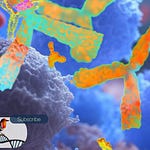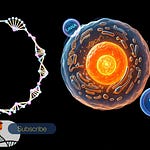Organoids represent a groundbreaking advancement in biomedical research. These miniature, three-dimensional structures, grown in vitro from stem cells, closely mimic the complexity and functionality of real human organs.
The development and utilization of organoids mark a significant leap forward in our ability to investigate complex biological processes, disease mechanisms, and therapeutic responses. By replicating the cellular diversity and microenvironment of human tissues, organoids offer an unparalleled tool for studying organogenesis, disease pathology, and potential treatments.
Creating organoids starts with the selection of stem cells – pluripotent stem cells like embryonic stem cells (ESCs) or induced pluripotent stem cells (iPSCs), as well as adult stem cells. These cells are cultured in a controlled environment with essential nutrients and growth factors. By manipulating culture conditions and adding specific signaling molecules, scientists induce these stem cells to differentiate into the desired cell types. The cells then self-organize into three-dimensional structures, mimicking the architecture and function of real organs.
Traditional models, like two-dimensional cell cultures and animal models, often fall short in replicating human physiology and disease accurately. Organoids, however, provide a more realistic representation of human tissues, leading to better insights and more relevant data. This is particularly crucial in drug development, where organoids can test drug efficacy and toxicity with higher predictive accuracy.
Organoids are valuable for personalized medicine, as patient-derived organoids can help tailor treatments to individual genetic profiles and disease states. For example, brain organoids are used to study neurological disorders, while liver organoids help in understanding metabolic diseases and drug metabolism.
By harnessing the power of stem cells and advanced culture techniques, organoids hold the promise of transforming research and therapeutic approaches. The future of biomedical research is here, and it's miniature, three-dimensional, and grown from stem cells. Stay tuned as we continue to uncover the vast potential of organoids in transforming medicine.
Biotechnology Reviews Journal, BioTechRvs
Stay Curious, Stay Innovative, thank you













Share this post